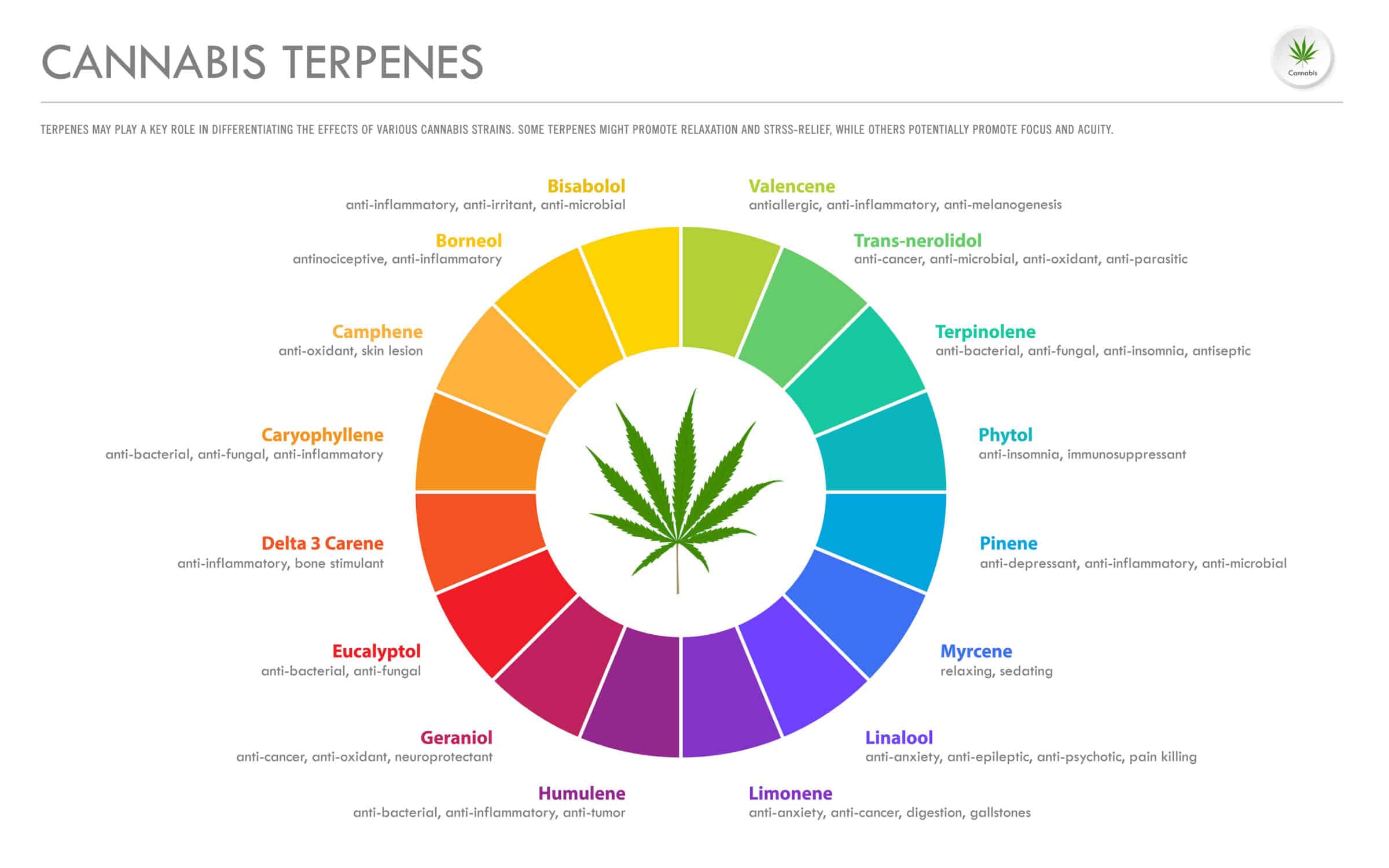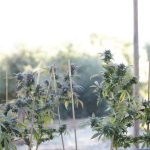For cannabis connoisseurs, the experience goes far beyond THC content. The unique aroma and flavor profile, largely determined by terpenes, are what truly set different strains apart and make each experience unique.
Terpenes are a vast family of aromatic compounds found not only in cannabis, but also in many other plants like citrus fruits, lavender, and rosemary. They’re the reason a lemon smells citrusy and a pine tree smells, well, piney.
A few terpenes you may have heard about include:
- Limonene, found in citrus peels like lemons and limes, contributes a bright, uplifting scent to some cannabis strains. It’s also thought to have mood-boosting properties.
- Myrcene, with its earthy and peppery aroma, is present in mangoes and hops. This terpene is known for its potentially relaxing effects.
- Pinene, the terpene responsible for the fresh, piney scent of many coniferous trees, is also found in cannabis. It’s believed to have potential cognitive benefits such as better focus and alertness.
- Linalool, with its floral and lavender-like aroma, is present in lavender and many other flowering plants. This terpene is known for its potentially calming effects, both mentally and physically.
There are tons more, which you can learn about in CannaCon’s excellent terpene guide.

Maintaining unique qualities of cannabis during curing
In cannabis, terpenes are produced in the trichome structures available on the female cannabis flower and are thought to interact with cannabinoids like THC and CBD, potentially influencing the overall effects of the plant.
Curing distinctive strains together can lead to a muddled terpene profile, where the stronger aromas overpower the more subtle ones. Separating strains ensures each gets the chance to develop its full flavor potential, allowing you to offer a range of truly distinct cannabis experiences.
Going a step further, even within the same strain, variations can occur. Separating your harvest allows you to identify and group buds with similar characteristics. This consistency is especially valuable for commercial or craft growers aiming to build a reputation for quality. This approach can also benefit home growers who care about finding the ideal genetics to grow in their limited space.
Separating strains during curing might seem like extra work, but the payoff is significant.
Preventing terpene degradation during the curing phase
Exposure to light, heat, and excessive air can all lead to terpene degradation or evaporation.
By maintaining consistent temperatures and humidity levels, along with proper circulation during the curing process, excess moisture will slowly evaporate while minimizing terpene loss.
For those curing manually, careful monitoring is often needed. Traditionally, curing jars need to be opened each day, and the flower carefully rotated to provide fresh air and prevent mold.
This is where utilizing a device like Droidcure can be particularly helpful. Droidcure is an easy-to-use automated curing tool, regulating relative humidity levels to create a precisely controlled environment within under 0.5% RH of your target. This minimizes guesswork and ensures ideal conditions for terpene preservation.
With the assistance of Droidcure, growers can create a gentle curing process that allows the remaining terpenes to mature and develop their full aromatic potential.
The result? Cannabis flowers bursting with the distinct flavors and aromas that truly define each strain.



